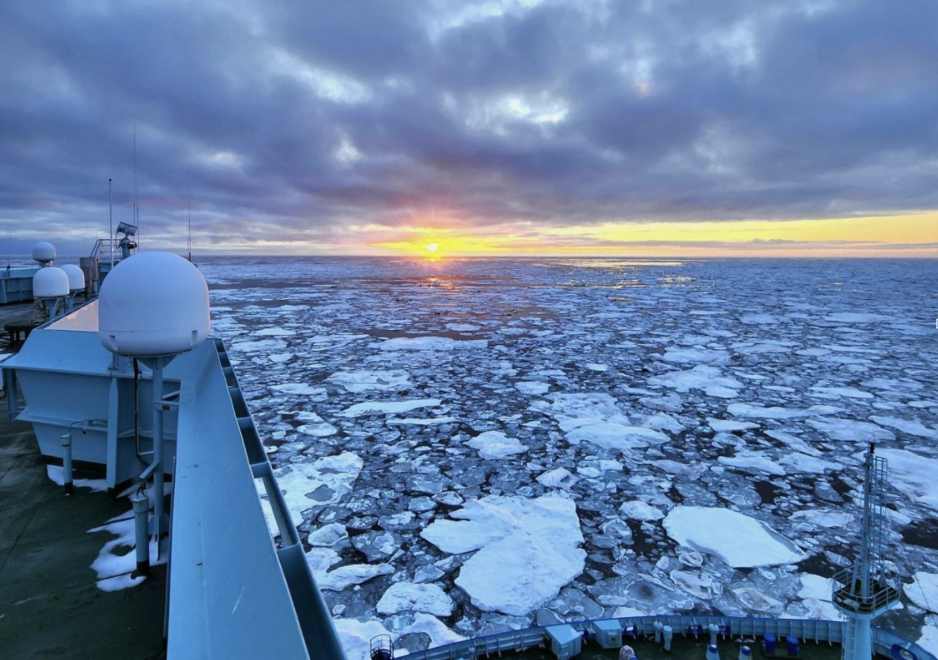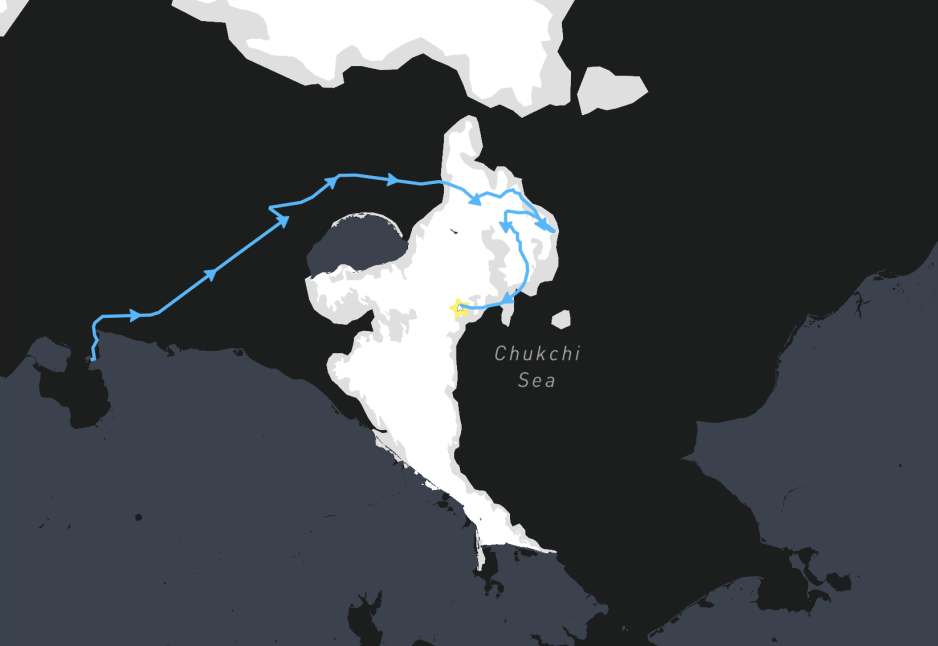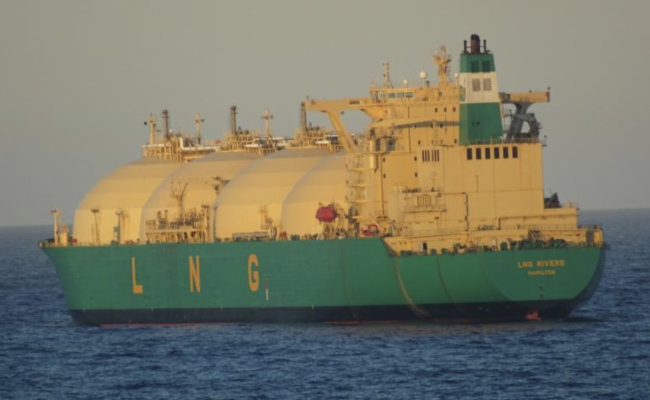LNG Carriers, Oil Tankers and Container Ships Race to Beat the Winter Ice on the Northern Sea Route

Nuclear icebreaker Sibir working around Wrangel Island in the Chukchi Sea to keep a shipping lane open. (Source: Atomflot)
With an unusually early return of winter sea ice shipping for low ice-class vessels will come to a halt on Russia’s Northern Sea Route in the coming days, at least officially. Some cargo, including strategically important modules for Arctic LNG 2 will continue to flow in violation of Russia’s own safety rules.
With winter fast approaching Arctic sea ice has returned unusually early in the eastern reaches of Russia’s Northern Sea Route. Vessel tracking sites and satellite images show the efforts of nuclear icebreaker Sibir working in the ice and keeping a shipping lane open for commercial ships on the route.
Over the past week more than a dozen vessels, including multiple liquefied natural gas carriers, bulk carriers, oil tankers and a container ship passed through the narrowing gap in the ice to the north of Wrangel Island in the Chukchi Sea.
Sea ice had persisted along that eastern section of the shipping route throughout summer giving winter ice a head start and allowing it to form quicker than it otherwise would.

The route of Nuclear icebreaker Sibir working in the ice between October 4-14. (Source: Shipatlas)
Traffic restrictions after October 15
Russia’s Northern Sea Route Administration announced that the route would shut down several weeks earlier than during past years due to the early formation of ice. Vessels without ice-class have to vacate the East Siberian and Chukchi Sea by October 15, with lower ice-class vessels following five days later.
However, the enforcement of the navigation deadline will be a different matter. Since being placed under the authority of Russia’s operator of nuclear icebreakers, Atomflot, the route’s administration has increasingly turned a blind eye to violations of its own rules and regulations.

An LNG carrier, bulk carrier, and container ship pass through a narrowing gap in the sea ice during the first week of October 2024. (Source: Shipatlas)
This summer a number of shadow fleet LNG and oil tanker vessels transited the route without permit and without being registered in the daily logs. Others did not possess sufficient ice classes as stipulated in the NSR’s official rules.
The October 15 and October 20 deadline for non and low ice-class vessels will almost certainly be breached by three heavy lift vessels carrying power plant modules from China’s Wison New Energies to the sanctioned Arctic LNG 2 project. The vessels, one without ice-class and two with a low Ice1 ice-class are assembling to form a convoy south of the Bering Strait.
They will likely receive an icebreaker escort to continue their voyage along the NSR. Unlike traditional cargo vessels, which can maintain speeds around 16 knots or above, heavy lift vessels’ particular hull shape and low position in the water requires much slower speeds for safe navigation.
For much of their trip from China across the North Pacific the three vessels have been traveling at just 7-8 knots. At those speeds the convoy has at least 3-4 weeks to go to reach its destination taking it deeper into November, let alone leaving the Arctic after delivering the sanctioned cargo.
Apart from violating Russia’s own NSR rules, an increasing number of vessels are also suspected of not abiding by the specific requirements set forth by the Polar Code, including specific equipment and crew training.



